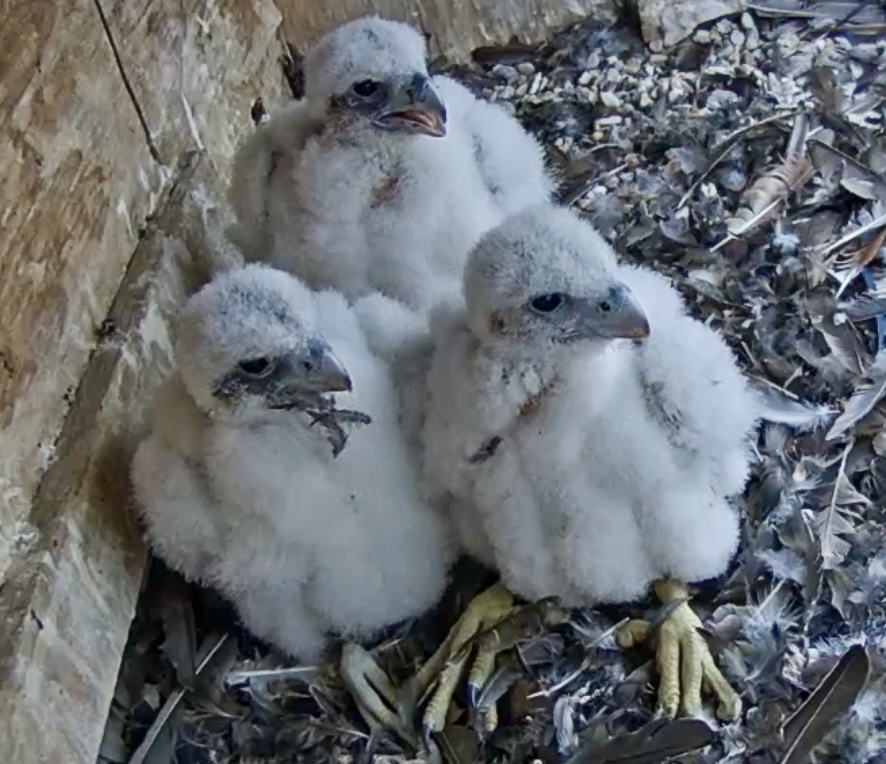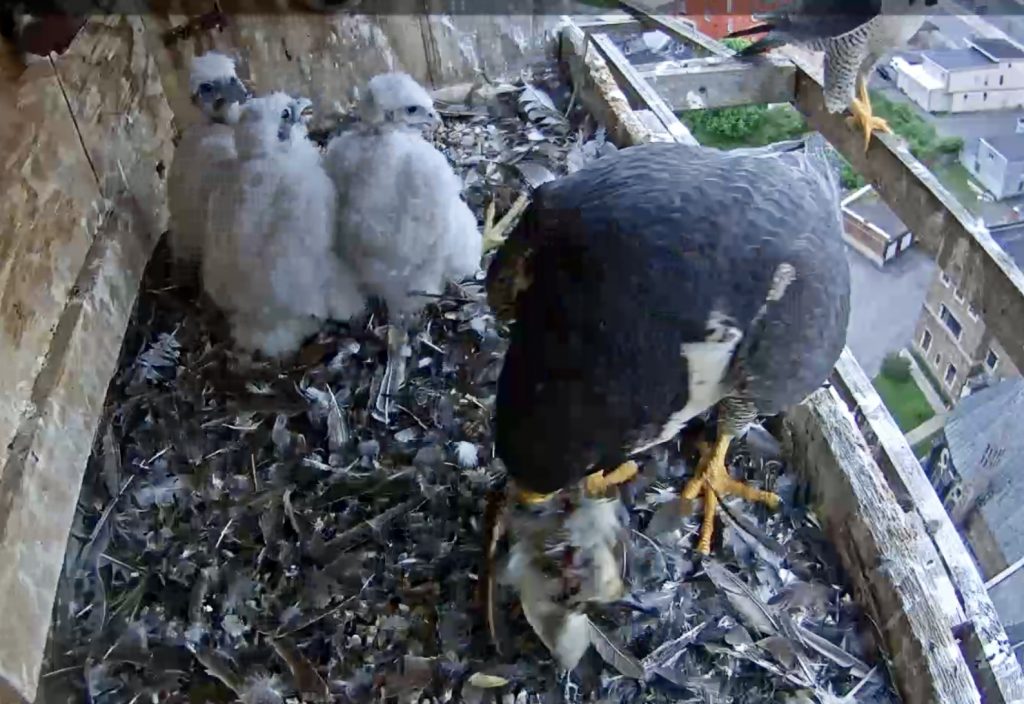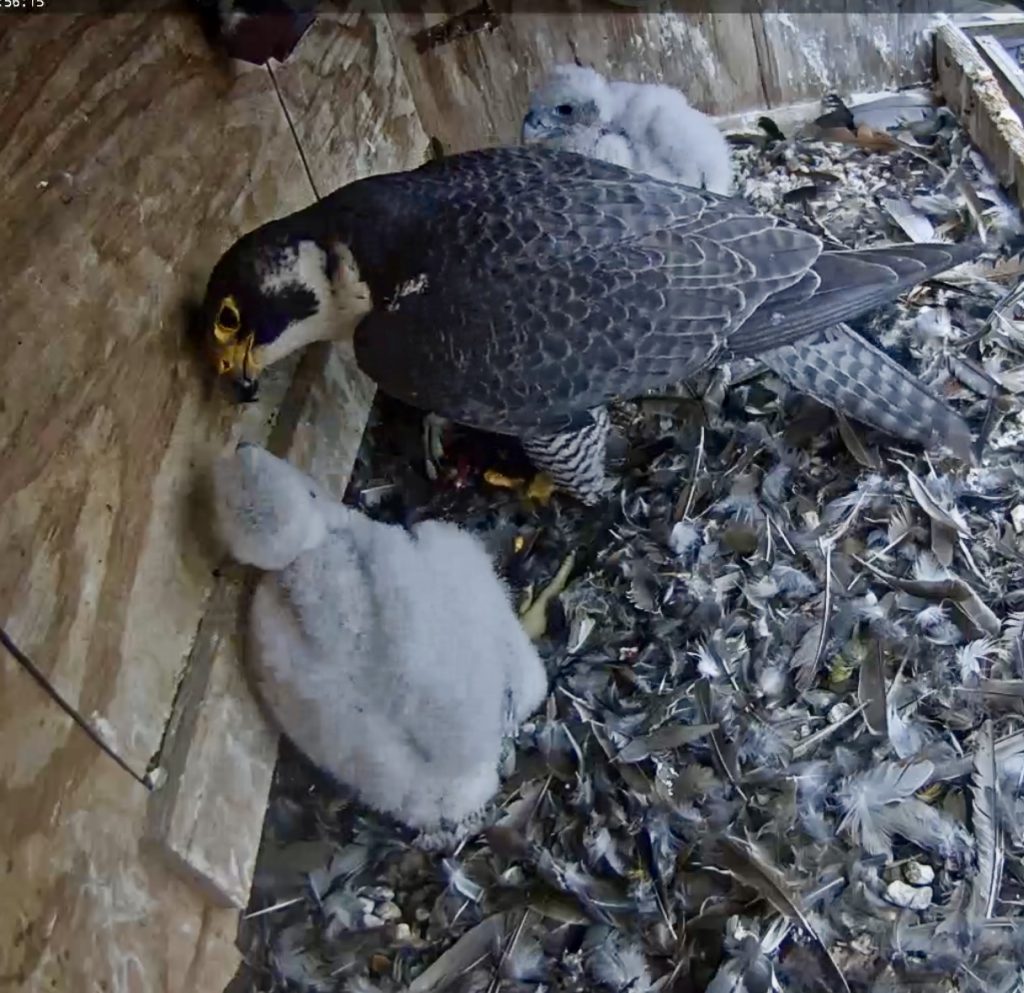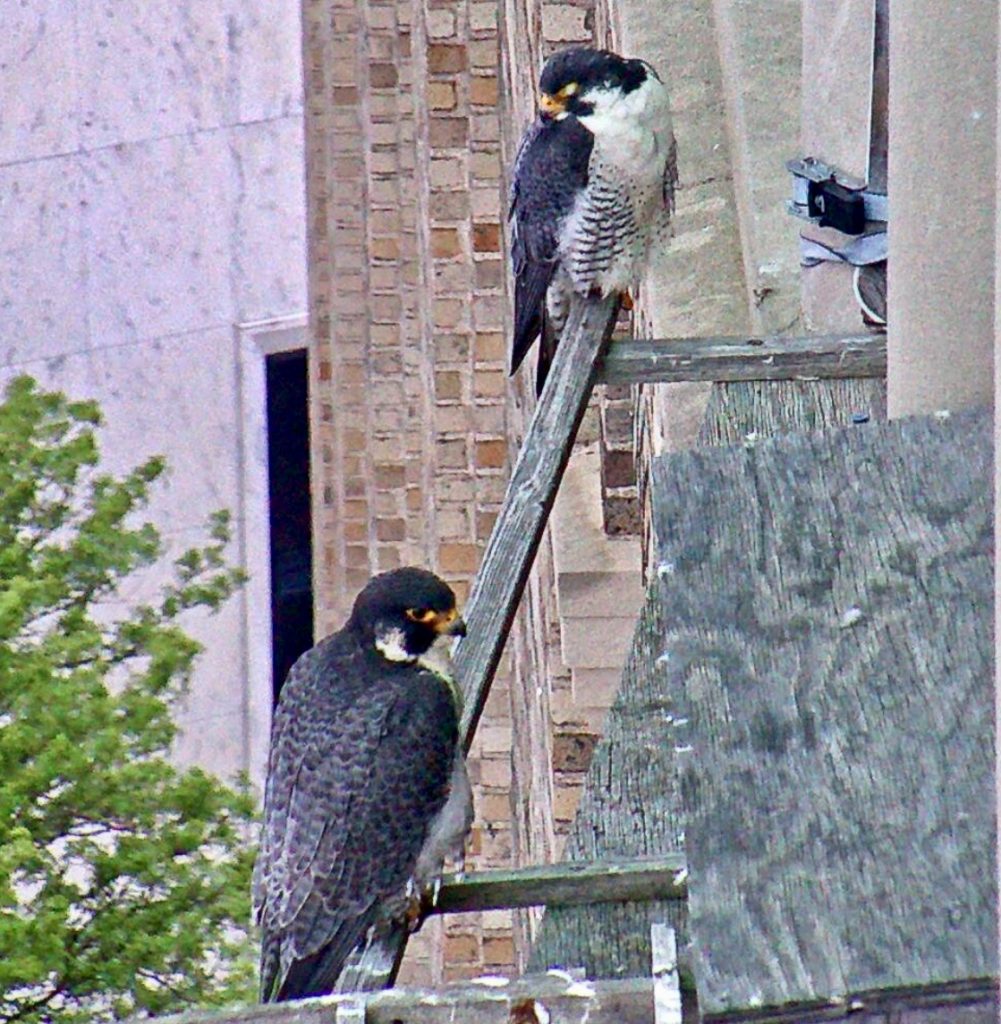Update for Saturday, May 19, 2024

This morning, when the chicks woke up in the nest, we noticed they had begun developing their dark masks overnight. Along with the small fringe of feathers on their tails and wings, these subtle plumage changes mark the beginning of a significant molt into juvenile plumage. Nestling falcons undergo a remarkable transformation as they shed their white downy plumage. This process typically starts around three weeks of age, with the fluffy white down being replaced by sleek, cryptically patterned juvenile plumage. These new feathers, darker and more streamlined, provide better protection for the young birds and are essential for their future flight capabilities.

By the time they reach five to six weeks old, most nestlings have completed this molting process, sporting a full set of juvenile feathers. This marks a critical stage in their development as they prepare to leave the nest and embark on their first flights. The transition from down to feathers not only signifies their growth but also their readiness to begin honing their hunting skills, a key aspect of their survival.

Of course, observing the early stages of their plumage change is a reminder that fledgewatch is not far off. In less than four weeks, volunteers will gather at the nest site in downtown Utica, ready to help Astrid and Ares spot and safeguard their young as they venture into the canyon on untested wings.
